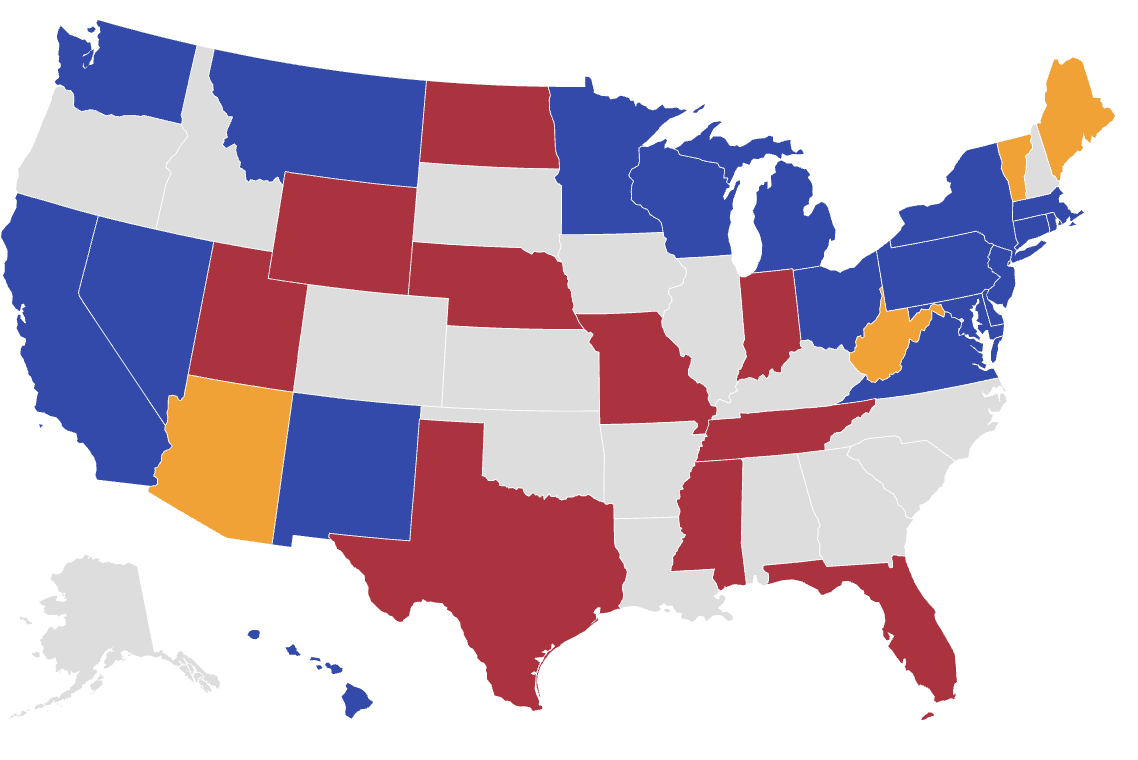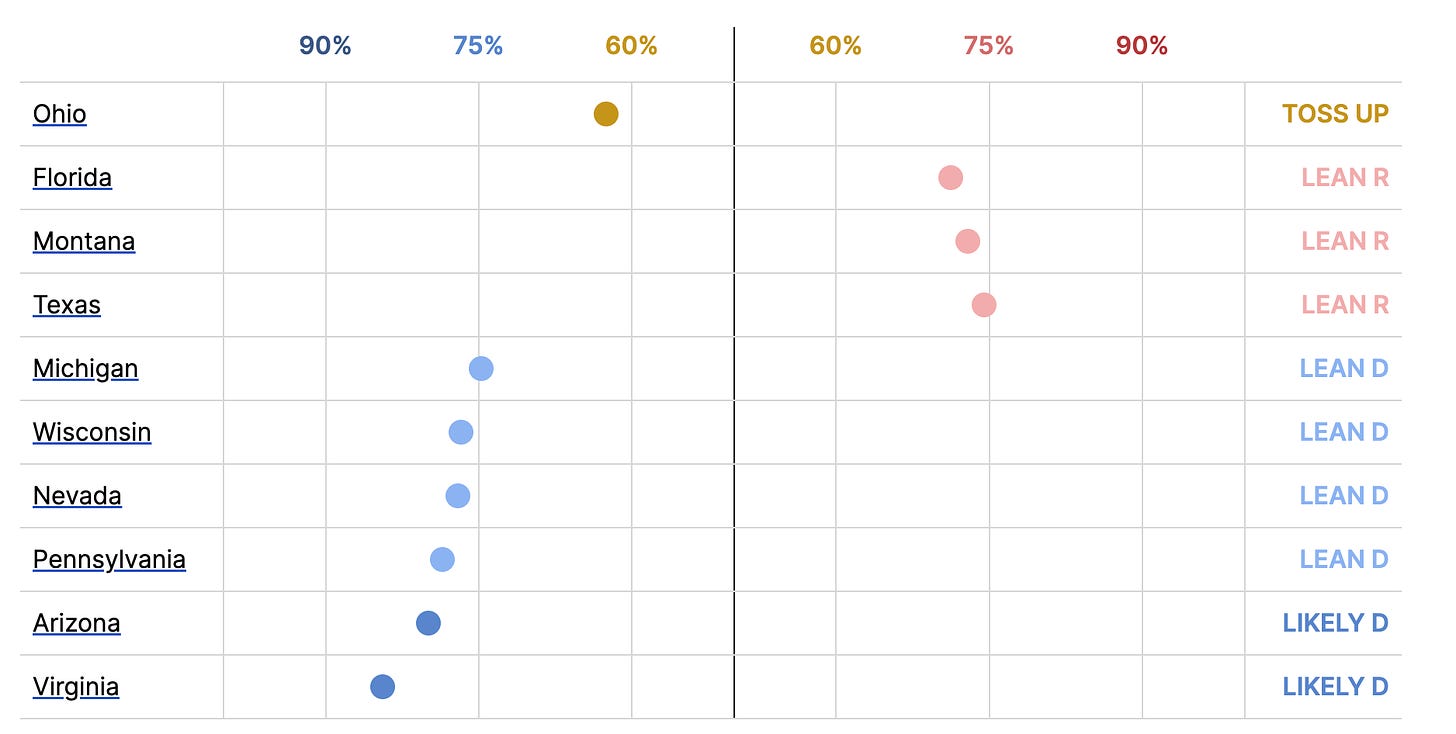Primary season is (almost) over.
The nominees have been chosen in every key Senate race.
Which means it’s time to rank the seats by the likelihood that they switch parties in November!
While the presidential race gets most of the attention (and money), the fight for the Senate majority is absolutely critical to the future of politics and policy too.
Need an example? How about Justices Neil Gorsuch, Brett Kavanaugh and Amy Coney Barrett — all nominated by then President Donald Trump, yes, but all confirmed to their spots on the nation’s highest court by a Republican-controlled Senate.
So, yeah, it matters.
The reality of the Senate map is that it will be very hard for Democrats to keep their current single-seat majority. The math is simply against them — with Democrats defending 23 seats to just 11 for Republicans. (There are four independents who caucus with Democrats.)
Of those 23 Democratic seats, three — West Virginia, Ohio and Montana — went for Donald Trump in 2020 and will do so again in November. Another handful of states where Democrats currently hold Senate seats — Michigan, Wisconsin, Arizona, Nevada and Pennsylvania — are expected to be very close at the presidential level, which could mean narrow margins downballot as well.
All of which means Democrats are playing a whole lot of defense. And the map has very few offensive opportunities for them. Only two Republican-held states are even competitive — Florida and Texas — but both are longish shots for Democrats.
Those facts are why Republicans are currently favored to win the Senate. Decision Desk HQ’s election model puts their chances of a takeover at roughly 7 in 10. Here’s how Decision Desk sees the odds in the most competitive races:
Below I’ve ranked the 10 Senate seats I think are most likely to change party hands in November.
I am putting the majority of my rankings behind the paywall — so that only paid subscribers will get access to the full piece. Why? Because I think this is the sort of insight that you don’t get everywhere. And that, I hope, makes you consider becoming a financial supporter of me if you aren’t already.
It’s $6 a month and $60 for the full year. You get lots of perks with a paid subscription — including a 30-minute, one-on-one Zoom with me! — as well as access to ALL of my “So What” content.
Here we go!
10. Maryland (Democratic controlled)
Former Gov. Larry Hogan is the absolute best candidate Republicans could field in this open seat race to replace retiring Democratic Sen. Ben Cardin. I still don’t think he can win. Joe Biden won Maryland by 33(!) points in 2020 and Kamala Harris is likely to match or even exceed that number this November. Overperforming the top of the ticket by 30 points is virtually impossible for Hogan (or anyone else). Plus, Democrats are thrilled about their nominee — Prince George’s County Executive Angela Alsobrooks. I think polling will show this race within the margin of error into October. But in the end, it’s hard for Hogan to find the votes he needs.
9. Texas (Republican controlled)
Yes, I know there was a recent poll that showed Democratic Rep. Colin Allred within 2 points of Sen. Ted Cruz. And that the last time Cruz faced voters, he won by less than 3 points over Beto O’Rourke. But, this is Texas in a presidential year. And while the state is in the process of a demographic shift that should move its politics toward Democrats, it’s not there yet. Could I see Allred getting 48%? Absolutely. Can I see him getting 50% + 1. WAY harder.
Read the rest! Become a paid subscriber today!
Keep reading with a 7-day free trial
Subscribe to So What to keep reading this post and get 7 days of free access to the full post archives.







